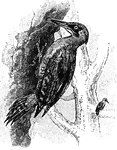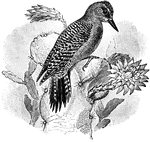Clipart tagged: ‘kwoodpecker’
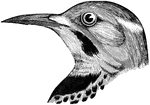
Flicker
"Colaptes auratus. Golden-winged Woodpecker. Pigeon Woodpecker. Flicker. Yucker. High-holder. Back and…

Woodpecker
While a woodpecker is drilling, the two parts of the bill are closed together, making a wedge-pointed…

Woodpecker
A genus of birds belonging to the climbers, and so called from their habit of pecking into trees in…
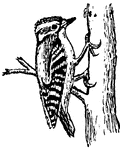
Woodpecker
The woodpeckers, piculets and wrynecks are a family, Picidae, of near-passerine birds . Members of this…
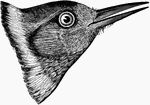
Lewis' Woodpecker Head
"Asyndesmus torquatus. Lewis' Woodpecker. Lared Woodpecker. Adult: Upper parts, including wings and…
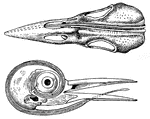
Woodpecker Tongue
This illustration shows the special development of tongues of woodpeckers; a, skull of flicker, showing…
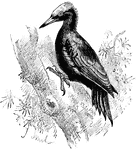
Great Black Woodpecker
Great Black Woodpecker (Drycopus martius). This bird of one of the largest of its tribe, black with…
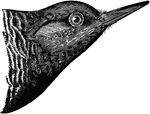
Brown-headed Woodpecker
"Sphyropicus thyroides. Brown-headed Woodpecker. Black-breasted Woodpecker. Red-throated Woodpecker.…
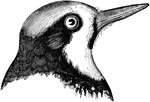
Californian Woodpecker
"Melanerpes formicivorus bairdi. Californian Woodpecker. Glossy blue-black; rump, bases of all the quills,…

Downy Woodpecker
The woodpeckers are typical climbers, with two toes turned forward and two backward, (zygodactyl).

Downy Woodpecker
"Picus pubescens. Downy Woodpecker. Usually 6-7 long; outer tail-feathers barred with black and white.…
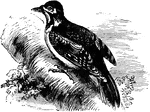
European Spotted Woodpecker
"Picus major. European Spotted Woodpecker. Bill more or less nearly equal to head in length, stout,…
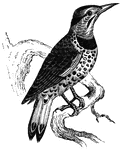
Golden-Winged Woodpecker
The golden-winged woodpecker is known for burrowing its own holes into live trees to use as a nest.
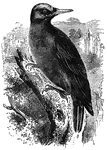
Great black Woodpecker
Chiefly making its habitat in Northern Europe, the great black woodpecker uses its long, sharp bill…
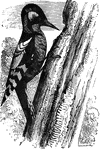
Great Spotted Woodpecker
The great spotted woodpecker measures an average of nine and a half inches long, and is found throughout…
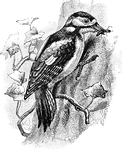
Great Spotted Woodpecker
A loud bird that uses it beak to bore holes in tree trunks to feed on bugs.

Green Woodpecker
The green woodpecker is found throughout Europe, and uses its beak to make holes in tree trunks to roost…
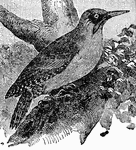
Green Woodpecker
"Woodpecker is the popular name of the old Linnæan genus Picus, now greatly divided. Woodpeckers…
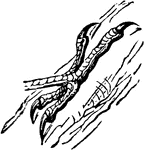
Foot of a Green Woodpecker
The foot of a Green Woodpecker, a bird belonging to the Scansores order. Scansores is an order of birds,…
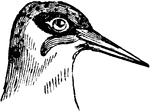
Head of a Green Woodpecker
The head of a Green Woodpecker, a bird belonging to the Scansores order. Scansores is an order of birds,…

Hairy Woodpecker
"Picus villosus. Hairy Woodpecker. Spotted and lengthwise streaked, but not banded. Usually 9-10 long;…
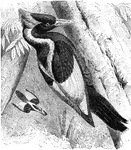
Ivory-billed Woodpecker
"Campephilus principalis. Ivory-billed Woodpecker. Glossy blue-black; a stripe down side of neck, one…

Lesser Spotted Woodpecker
It is not only to seek for food that Woodpeckers make holes in trees, but also to establish their nests,…
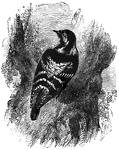
Lesser Spotted Woodpecker
Common in England and distributed across Europe, the lesser spotted woodpecker measures about five and…
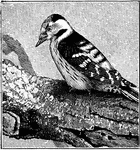
Lesser Spotted Woodpecker
"Dendrocopus minor, or Lesser Spotted Woodpecker, are the British representatives, The colours in this…
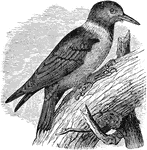
Lewis' Woodpecker
"Asyndesmus torquatus. Lewis' Woodpecker. Lared Woodpecker. Adult: Upper parts, including wings and…
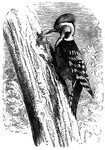
Middle Spotted Woodpecker
Found in Southern Europe, the middle spotted woodpecker has a black coat, with a crimson underside and…
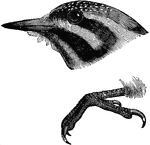
Nuttall's Woodpecker
"Picus scalaris nutalli. Nuttall's Woodpecker. Similar; rather larger' more white, this prevailing on…

Red-bellied Woodpecker
"Centurus carolinus. Red-bellied Woodpecker. Whole crown and nape scarlet in the male; nape only so…
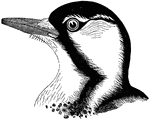
Red-cockaded Woodpecker
"Picus borealis. Red-Cockaded Woodpecker. Body spotted and crosswise banded, but not streaked. Head…
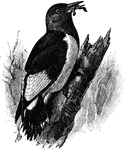
Red-Headed Woodpecker
The Red-headed Woodpecker, Melanerpes erythrocephalus, is a small or medium-sized woodpecker from temperate…

Red-headed Woodpecker
"Melanerpes erythrocephalus. Red-headed Woodpecker. Tricolor. Adult: Beautifully tricolor with "the…
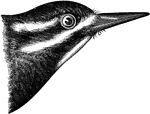
Red-headed Woodpecker
"Sphyropicus thyroides. Brown-headed Woodpecker. Black-breasted Woodpecker. Red-throated Woodpecker.…

Yellow-Bellied Sapsucker
From the woodpecker family, the Yellow-Bellied Sapsucker (Sphyrapicus varius) is known for drilling…
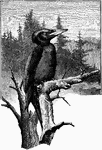
The Great Black Woodpecker
"Picus martius, the Black Woodpecker, an inhabitant of the pine-forests of Europe and Asia to Japan,…
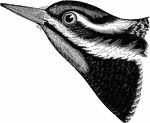
Yellow-bellied Woodpecker
"Sphyropicus varius. Yellow-bellied Woodpecker. Male: Crown crimson, bordered all around with black;…
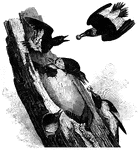
Redheaded Woodpeckers
The most common type of woodpeckers found in the United States, the red-headed woodpecker feeds on various…

Three-toed Woodpeckers
"Picoïdes. Three-toed Woodpeckers. Three-toed: the hallux (1st toe) absent, the 4th toe reversed…
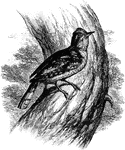
A Wryneck Sitting on a Tree
"Iynx torquilla, the Cuckoo's-mate or Snake-bird, is fairly common in England, and extends thence to…

